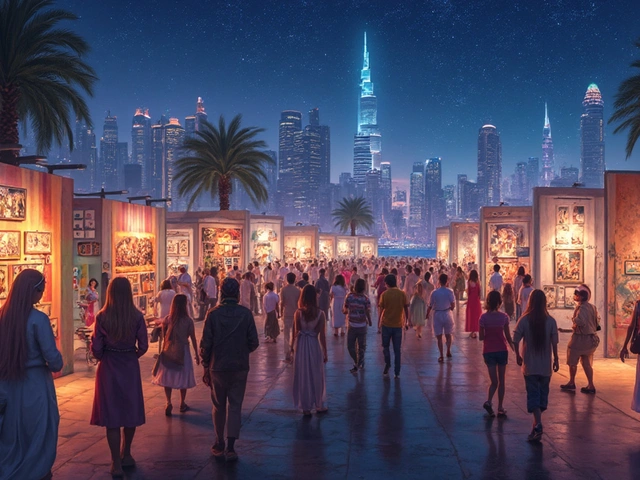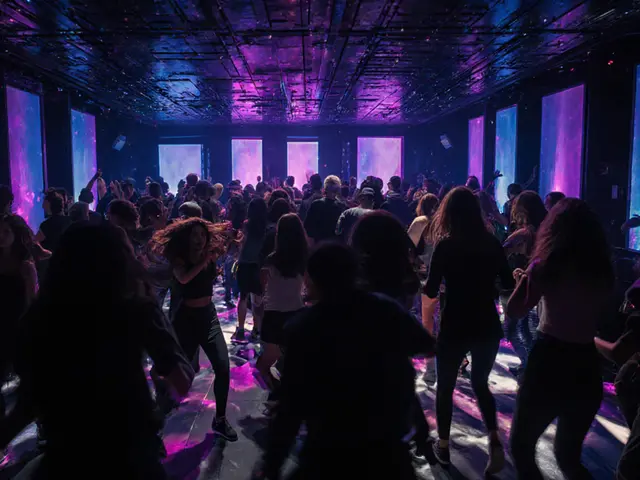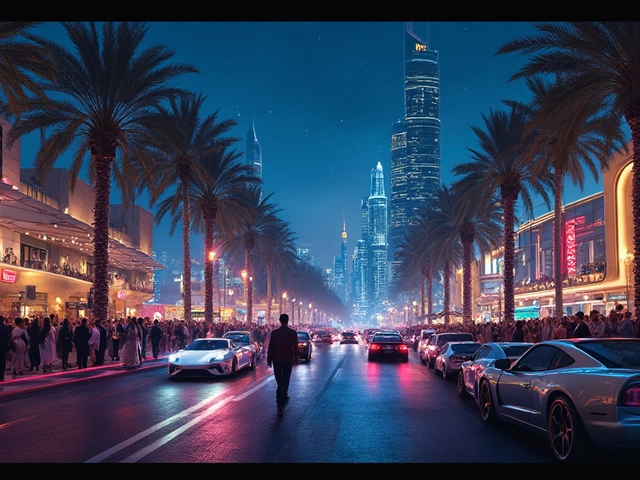
If you live in Dubai or even just landed for a quick visit, you already know this city doesn’t do “ordinary.” Dubai landmarks are bold, over-the-top, and made to impress. But with so many options, it’s easy to get overwhelmed or fall for tourist traps.
Before you sprint up the Burj Khalifa, make sure to book tickets online—cheaper and you’ll skip those long lines under the desert sun. Want to do it right? Go for a sunrise slot. The city looks unreal from the top when everything’s still waking up.
And hey, don’t just stick to the shiny stuff. If you haven’t tried wandering through Al Fahidi Historical Neighbourhood, you’re missing a huge piece of Dubai’s soul. Grab a karak tea from a roadside stall and walk at your own pace—this is the kind of spot where old Dubai charm still lives and breathes.
- Sky-High Icons and Record Breakers
- Historic Gems in Old Dubai
- Cultural Hotspots You Can't Miss
- Hidden Local Favorites
- Pro Tips for Savvy Explorers
Sky-High Icons and Record Breakers
If you think big dreams are just talk, Dubai’s skyline is proof they can be real. In this city, skyscrapers don’t just touch the sky—they break records. Let’s talk about the places everyone keeps posting on Instagram, plus tips you’ll actually use if you’re planning a visit or showing friends around.
The Burj Khalifa is the king of Dubai landmarks. It’s not just the world’s tallest building—it’s almost twice as tall as the Empire State Building. The official height is 828 meters. Most people rush straight to the 124th or 148th floor (At The Top), but locals know the real trick is to visit around 5 pm: you catch both day and night views in one visit, and the sunsets are next-level. Tickets get more expensive the higher you go, so decide if that extra splurge is worth it for you.
- Pro Tip: Book your slot online using UAE-based discount apps like The Entertainer for 2-for-1 deals. Skip weekends if you want to avoid crowds.
- Dress cool—a suit and tie or heels are pointless up there, and comfy shoes are your friend. The elevator ride alone will blow your mind: you go from ground to top in just about a minute.
Next up—Burj Al Arab. This sail-shaped hotel isn’t just famous for its luxury; it’s officially dubbed a ‘seven-star’ hotel, though the ranking doesn’t exist. People love grabbing tea at the Skyview Bar just for the views. Not a guest? You’ll need a reservation. But those ocean views with the Palm and city behind? Unreal.
And don’t skip Palm Jumeirah. Taking a monorail ride gives you a bird’s-eye look at the world’s largest man-made island. For that epic shot, use the View at The Palm observatory—it gives you the classic palm-tree photo people always ask about. Tickets are more affordable than the Burj Khalifa and it’s rarely as packed.
Here’s a quick comparison to keep things clear:
| Landmark | Unique Feature | Best Time to Visit | Approx. Ticket Price (AED) |
|---|---|---|---|
| Burj Khalifa | Tallest building in the world (828m) | Sunset (5-7 pm), Weekdays | 159–399 |
| Burj Al Arab | ‘Seven-star’ luxury hotel | Early afternoon tea slot | By reservation (from 250) |
| Palm Jumeirah | Largest man-made island | Morning for clear photos | 100–180 (View at The Palm) |
So, if you want to cover the big hitters in Dubai’s skyline, plan smart, book ahead, and pick times when the city isn’t swamped with tourists. Trust me, seeing these record-breakers in person is something you won’t forget.
Historic Gems in Old Dubai
Forget the futuristic skyline for a minute and head over to the heart of Old Dubai. Here, it’s not about steel and glass — it’s about clay walls, narrow alleys, and stories that go back way before the first supercar was ever parked on Sheikh Zayed Road.
Start with Al Fahidi Historical Neighbourhood (sometimes called Al Bastakiya). This place is loaded with restored wind-tower houses and old merchant homes. The Dubai Museum, which is set inside the Al Fahidi Fort, is the oldest building in the city — completed in 1787. It gives you an inside look at pearl diving days, Bedouin life, and how Dubai’s market scene came to life.
Ready for an easy win? Jump on an abra (that’s the little wooden boat) for just AED 1 and float across Dubai Creek. It connects Bur Dubai to Deira and gets you right into the real action. The Gold Souk and Spice Souk are on the Deira side; just try walking through without getting hooked by the colorful sights and crazy deals.
- If you’re brave enough, stop at a local shop and taste Iranian saffron or dates from the market. Vendors expect bargaining, so don’t be shy.
- Photography tip: Early mornings or sunset mean better light, fewer crowds, and cooler temperatures — trust me, you’ll thank yourself later.
- History buff? The Sheikh Mohammed Centre for Cultural Understanding runs heritage tours with Emirati guides, so you can ask what you really want to know about local customs and life.
| Landmark | Year Built | Ticket Price (2025) |
|---|---|---|
| Al Fahidi Fort / Dubai Museum | 1787 | AED 3 (Adults), AED 1 (Children) |
| Abra Ride | N/A | AED 1 per trip |
| Gold Souk | 1940s (current area) | Free Entry |
For anyone staying in Dubai longer, look into the Dubai Culture Pass — it often includes discounts for both new and historic spots. Grab a street map or use Careem Bikes near Al Seef to move around; the area is more walkable than you think.
The real trick? Don’t rush. Old Dubai rewards those who slow down and actually talk to people. You’ll learn stuff Google Maps just won’t tell you.

Cultural Hotspots You Can't Miss
When people talk about Dubai landmarks, they sometimes picture just glass towers and flashy malls. But the city’s real flavor comes to life in its cultural hotspots, and you don’t have to be a tourist to enjoy them.
The Dubai Opera is hands-down the first place worth your attention if you even mildly enjoy live shows. From Arabic pop concerts to West End musicals, the Opera hosts over 200 events a year. Check their schedule online—locals often grab discounts before big weekends, and their Ramadan series always packs out.
At Alserkal Avenue in Al Quoz, you’re in the heart of Dubai’s art life. This area’s old warehouses now hold galleries, cafés, and event spaces where you can see modern UAE art, watch short films, or join pop-up talks. A lot of events here are free, especially on Saturday afternoons. If you’re an art lover or just want a cool photo for your Instagram, it’s a must.
The Etihad Museum at Jumeirah holds the key stories behind the UAE’s formation in 1971. You’ll find interactive galleries and actual documents signed by UAE founders, so it doesn’t feel like another stuffy museum trip. Local schools send students here for a reason—this is where you really get what made Dubai the city it is today.
For something way more hands-on, head to Women’s Museum Bait Al Banat in Deira. This isn’t just for women—locals and expats visit to discover the untold history of Emirati women and their role in society. Entry is affordable, and it’s right next to the Gold Souk, so you can explore both in one morning.
Here’s a quick breakdown of what each spot offers, plus basic details:
| Spot | Main Highlight | Location | Average Entry Fee (AED) |
|---|---|---|---|
| Dubai Opera | Live shows, concerts, musicals | Downtown Dubai | Varies (100-600) |
| Alserkal Avenue | Art galleries, pop-up events | Al Quoz | Free - 50 |
| Etihad Museum | UAE history, interactive exhibits | Jumeirah | 25 |
| Women’s Museum | History of Emirati women | Deira | 20 |
Don’t forget: dress modestly when visiting cultural spaces in Dubai, especially if you’re heading into older neighborhoods. Weekdays mean smaller crowds, and ride-sharing apps like Careem make getting around fast and reasonably priced—even during peak hours.
Hidden Local Favorites
Everyone talks about the big Dubai landmarks, but ask around and you’ll find a whole side of the city that only locals and long-timers know. These places don’t show up in every glossy guidebook, but they deliver something special—authentic vibes, unexpected views, or simply the kind of peace you can’t get in the tourist rush.
Start with the Jumeirah Fishing Harbour. Early morning, you might catch fishermen bringing in their catch, and there are no souvenir stalls or overpriced coffee shops stalking you for dirhams. Instead, you’ll find dockside banter, old wooden boats (dhows) bobbing, and a handful of tiny seafood joints that serve the freshest hammour or grilled prawns you’ll ever taste.
Alserkal Avenue, hidden in Al Quoz, is Dubai’s creative core. What started as a group of warehouses now houses art galleries, indie cinemas, homegrown cafes, and seriously unique pop-up events. If you’re into street art or want to spot the next UAE-grown artist before they go big, this is where you hang. Pro tip: weekends often see art tours, workshops, and even food trucks rolling in.
For a blast from the past and a real taste of Emirati life, visit the Deira Spice Souk just as the shops open. You’ll skip the mid-day crowds and get a whiff of spices from saffron to sumac the minute you arrive. Vendors are used to bargaining—don’t be shy, give it a try. Sometimes, locals shop here as much as tourists, especially for big Ramadan or Eid feasts.
Some of these local gems might not even make it to TripAdvisor’s top ten, but for those who want the truth behind Dubai landmarks, they’re the real deal. Here’s a quick cheat sheet to help you find or time your visit right:
| Spot | Best Time to Go | What’s Special |
|---|---|---|
| Jumeirah Fishing Harbour | Pre-9 AM, weekdays | Local fishermen, cheap fresh seafood |
| Alserkal Avenue | Late afternoons, weekends | Art events, indie coffee, offbeat culture |
| Deira Spice Souk | 10–11 AM | Traditional market, local Emirati shoppers |
Skip the big bus tours and double-decker photo ops. Try these places, and you’ll see a Dubai that feels less staged and more like home—even if you’re just here for a few days.

Pro Tips for Savvy Explorers
Let’s be real, Dubai doesn’t always make it simple for newcomers or even locals to get the most out of every landmark visit. But there’s ways to outsmart the crowds, save some dirhams, and see the real city—not just the postcards. Here’s how you get ahead:
- Dubai landmarks are busiest on weekends (Friday and Saturday), especially at sunset. If you want breathing room at spots like The Dubai Mall or Dubai Frame, aim for weekday mornings.
- Public transport here is clean, cheap, and way less stressful than traffic. The Metro takes you right to Burj Khalifa/Dubai Mall and Dubai Creek. Get a Nol card at any station; it’s faster and can be used on buses, too.
- Many top attractions have Emirates ID or resident discounts. Even Etihad Museum and La Perle give locals and UAE residents a cut on ticket prices. Always ask before you pay.
- Love taking photos? Head to the Dubai Miracle Garden before 10 a.m.; fewer people and the flowers look freshest right after sunrise.
- During Ramadan, outdoor areas are less crowded in the afternoon, but check open hours. Some attractions change timings for prayer breaks or iftar.
- For souvenirs that won’t double your luggage weight, try the souks in Deira for saffron, oud, or Arabic coffee—just don’t accept the first price. Bargaining really works here.
- Download Careem or RTA apps for quick taxis—way faster and more reliable than hailing one on a hot day. Both let you choose female drivers if you want.
- Before you go to iconic skyscrapers, check fog forecasts. On foggy mornings (common from October to March), the views from high up are epic—think sea of clouds—and you’ll get those jaw-dropping Instagram shots.
Here’s a quick look at the best seasons and crowd levels, so you can pick your timing:
| Month | Weather | Crowds | Local Events |
|---|---|---|---|
| November-February | Cool, pleasant (18–25°C) | High, especially in December holidays | Dubai Shopping Festival, Global Village |
| March-May | Warmer (22–35°C) | Medium | Art Dubai, Ramadan (moves yearly) |
| June-September | Hot (30–45°C) | Low | Ice rinks, indoor attractions boom |
| October | Cooling off (25–33°C) | Medium | GITEX tech week, start of new season |
Smart explorers always double-check opening hours during public holidays—Eid, National Day, and Diwali celebrations can mean longer hours but also heavier crowds. And if you’re a frequent visitor or Dubai resident, grab annual passes for places like IMG Worlds or Dubai Parks—they pay for themselves fast if you go more than twice a year.
One last thing: if you’re ever unsure about local etiquette—like dress codes in Old Dubai or during Friday prayers—ask a staff member or look for signs. A little respect goes a long way, and locals are usually happy to help if you’re polite.




